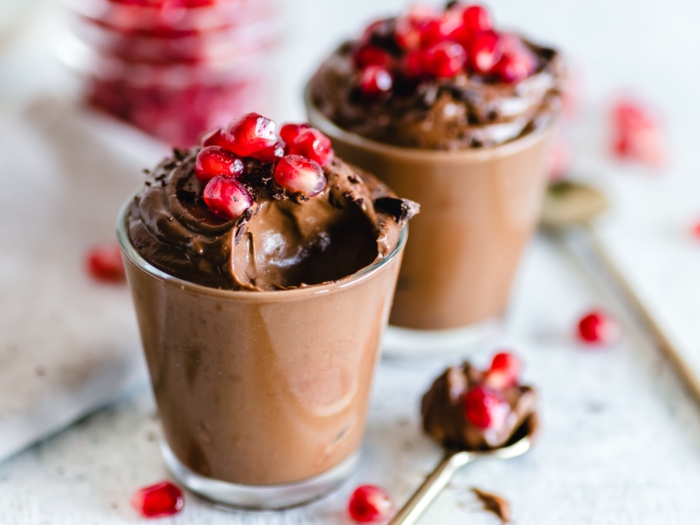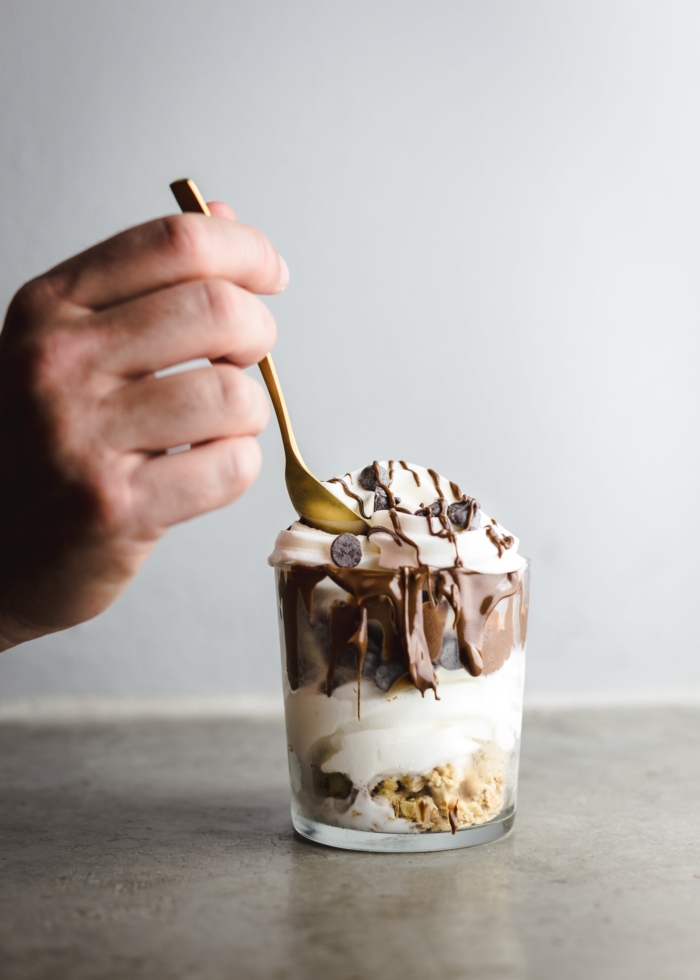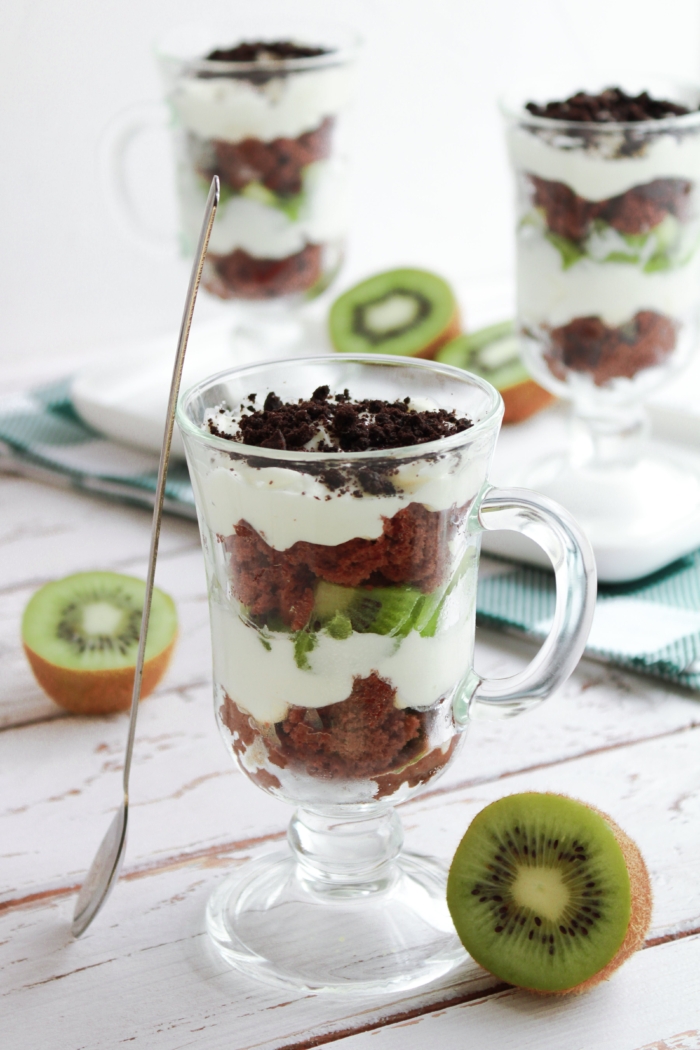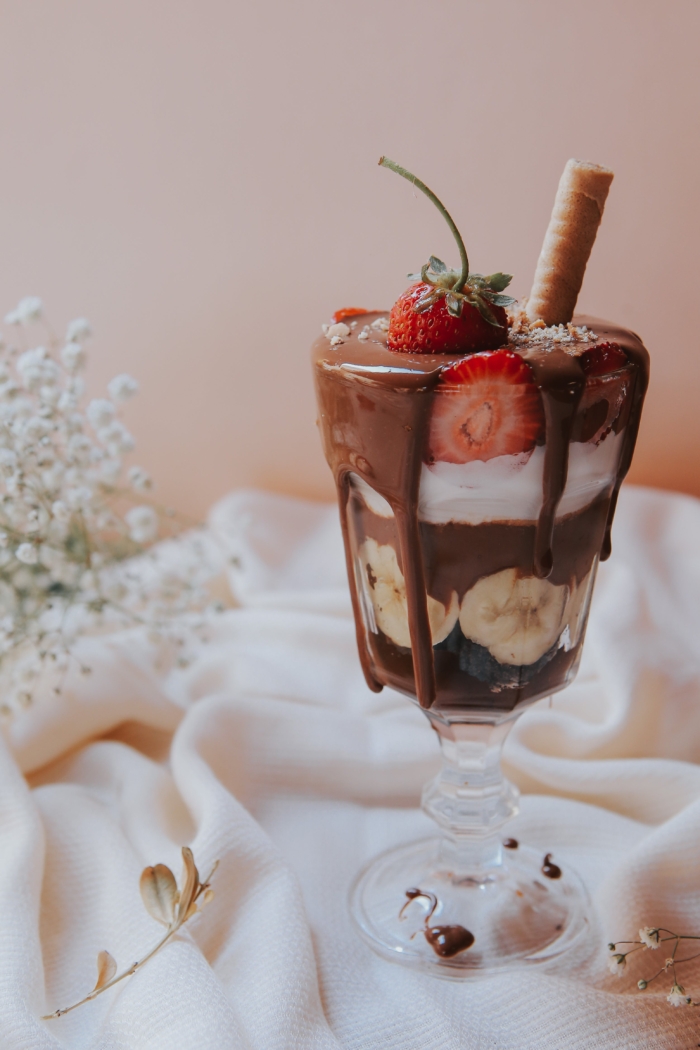Is Pudding Gluten Free?
Pudding has long been a favorite treat for many across the world. Its creamy texture, combined with sweet flavors, can make any day better. But what happens when you are diagnosed with celiac disease or have a gluten sensitivity? With the growing awareness of gluten-related disorders, there are now numerous options for gluten free puddings. In this post, we’ll delve deep into the world of pudding that is gluten free, ensuring that everyone can enjoy this delectable treat.

What Is Pudding?
Pudding, a word that brings joy to hearts and waters mouths, is a delightful culinary creation that has earned its special place in global cuisine. But what exactly is pudding? It’s a question that might evoke various images, tastes, and textures in different people’s minds, mainly due to its diverse range of preparations and ingredients.
Check out this Avocado Pudding and this Chia Pudding!
A Dessert of Many Forms
In its most general sense, pudding refers to a kind of dessert that can be either baked, boiled, or steamed. However, pudding’s definition varies across regions and cultures.
British Pudding: In British cuisine, ‘pudding’ is a term used broadly to refer to desserts of various kinds. The British pudding can also be savory, such as Yorkshire pudding, which is a popular side dish made from a batter of eggs, flour, and milk or water.
American Pudding: In the United States, pudding typically refers to a sweet, creamy dessert that is cooked on the stovetop and then chilled. It is generally made with milk, sugar, and a thickening agent such as cornstarch or gelatin. Common flavors include vanilla, chocolate, and butterscotch.
The Basic Composition
The foundation of pudding typically involves the combination of milk, sugar, and a stabilizing agent. Depending on the variation and regional preference, ingredients like eggs, fruits, nuts, bread, rice, and spices might be included to create a unique flavor and texture.
Pudding as a Comfort Dessert
Pudding has a reputation as a comfort dessert, offering a warm, soothing, and delightful culinary experience. It is versatile, allowing for various modifications, toppings, and mix-ins, such as cookies, fruits, and whipped cream, creating endless delightful variations.
Popular Variations of Pudding
Rice Pudding: A delightful blend of rice mixed with milk and other ingredients, offering a hearty and delicious experience.
Bread Pudding: Often made from stale or leftover bread soaked in a mixture of milk, eggs, sugar, and spices, then baked to perfection.
Chia Pudding: A newer, popular variation, where chia seeds are soaked in milk or a milk alternative until a gel-like consistency is achieved, usually chilled and served as a healthful option.

What Is The Difference Between Pudding and Custard?
Pudding and custard are both delightful desserts that are creamy and comforting, but they have distinct characteristics in terms of ingredients, preparation, and texture. Let’s break down the differences between these two popular treats.
1. Ingredients and Composition:
Pudding:
Pudding usually contains milk, sugar, and a thickening agent like cornstarch or gelatin.
In some recipes, eggs might be added to enhance the richness and flavor.
Custard:
Custard primarily consists of milk (or cream) and eggs, which are vital for its distinctive texture. Sugar and flavorings like vanilla are typically added for sweetness and taste.
The egg yolks in the custard give it a rich, creamy consistency and a pale-yellow hue.
2. Texture and Consistency:
Pudding:
Puddings, especially those thickened with cornstarch, have a smooth, creamy texture that holds its shape fairly well.
Its consistency can range from pourable to quite firm, depending on the preparation and desired outcome.
Custard:
Custards have a delicate, soft, and creamy texture, primarily due to the coagulation of egg proteins.
The consistency of custard is typically more gelatinous and less rigid than pudding.
3. Preparation and Cooking:
Pudding:
Puddings are often cooked on the stovetop. The thickening agent, like cornstarch, activates with heat and transforms the liquid into a thicker consistency.
Some puddings might be baked or steamed, especially those with bread or rice bases.
Custard:
Custards can be either baked or cooked on the stovetop. Baked custards, like crème brûlée or flan, are set in the oven in a water bath to ensure gentle and even cooking.
Stirred custards, like pastry cream, are made on the stovetop and require careful attention to prevent curdling.
4. Variations:
Pudding:
Pudding comes in numerous flavors, from vanilla and chocolate to more exotic varieties. It can also be made using various bases, such as rice or bread.
Custard:
Custard also offers various flavor options, and its texture can range from a thick sauce (like in custard-filled pastries) to a more solidified dessert (like flan or pot de crème).

Gluten Free Pudding Brands
There are several brands that offer gluten free puddings, ensuring that those with celiac disease or gluten sensitivity can enjoy this delightful dessert without worry. Always remember to read labels and ensure that the products are certified gluten free. Here are some gluten free pudding brands you might consider:
Kozy Shack: Known for its rice puddings and tapioca-based desserts, many of Kozy Shack’s products are naturally gluten free. However, always check the packaging for specific gluten free labeling.
Snack Pack: A popular brand, especially for individually packaged pudding cups. Many of their puddings, including the classic chocolate and vanilla varieties, are gluten free, but it’s essential to read the label to ensure there’s no cross-contamination or gluten-containing additives.
Simply Delish: Offers a range of gluten free and vegan pudding options. Their products are also free from artificial flavors and colors.
JELL-O: Some of the JELL-O pudding products are gluten free. However, always verify by reading the product label, as not all of their items are free from gluten.
Dr. Oetker: This brand has a variety of dessert products, some of which are gluten free. They might not be available in all regions, but they’re worth checking out if you come across them.
European Gourmet Bakery: They offer organic pudding mixes that are gluten free. The brand focuses on high-quality ingredients without artificial colors or preservatives.
When purchasing any gluten free product, it’s crucial to:
Read the label: Ensure the product specifically states that it is gluten free.
Check for certification: Some products have a gluten free certification, which can offer extra peace of mind.
Be wary of cross-contamination: Even if the ingredients are gluten free, the product might be processed in a facility that handles gluten-containing items.
Pudding Uses
Pudding, with its creamy texture and delightful flavors, is versatile and can be used in various culinary creations beyond just being a simple dessert. Here’s a roundup of ingenious and delectable ways to incorporate pudding into your recipes:
1. Pudding Pops:
Freeze it: Make pudding pops by freezing your favorite pudding in popsicle molds. Add fruits or chocolate chips for an extra treat.
2. Cake Filling or Topping:
Layer it: Use pudding as a filling between cake layers or as a topping. It keeps the cake moist and adds a creamy texture.
3. Pie Filling:
Fill it: Pudding makes an excellent filling for pies. Try chocolate, vanilla, or lemon pudding for a delightful pie filling.
4. Trifles:
Layer it: Create stunning trifles by layering pudding with cake pieces, fruits, and whipped cream.
5. Pudding Cups:
Customize it: Make individual pudding cups and get creative by adding layers of cookies, fruits, or granola.
6. Parfaits:
Parfait Perfection: Layer pudding with yogurt and fruits to make a delicious and visually appealing parfait.
7. Pudding Dip:
Dip it: Use pudding as a dip for cookies, fruits, or wafers. It is a hit at parties and gatherings.
8. Smoothie and Milkshake Base:
Blend it: Incorporate pudding into your smoothies or milkshakes for a rich and creamy texture.
9. Breakfast Bowls:
Boost it: Make your breakfast bowls exciting by adding a layer of pudding. Top it with fruits, nuts, or seeds. Check out Gluten Free Cereal too!
10. Stuffed Pancakes or Crepes:
Stuff it: Use pudding as a filling for pancakes or crepes, making them irresistibly rich and delicious.
11. Coffee Creamer:
Enhance it: Add a dollop of pudding to your coffee for a creamy twist. Perfect for those who enjoy experimenting with coffee flavors.
12. Frosting Alternative:
Spread it: Use pudding as an alternative to frosting on cupcakes or cakes. It gives a smooth and glossy finish.

Frequently Asked Questions (FAQs)
Most Jell-O pudding mixes are gluten free, but the Cheesecake Pudding & Pie Filling mix contains barley.
Yes, most pudding snacks are gluten free. However, be sure to read the ingredients label carefully, as some brands may contain gluten-containing ingredients.
No, pudding is not a wheat. It is a type of dessert that is typically made with milk, eggs, flour, and sugar. However, there are some gluten free pudding recipes available.
Yes, Jell-O Instant Cheesecake Pudding & Pie Filling Mix contains barley, which is a gluten-containing ingredient. However, most other cheesecake pudding brands and flavors are gluten free. Be sure to read the ingredients label carefully before purchasing any cheesecake pudding.
You May Also Like
- Are Reese’s Gluten Free?
- Gluten Free Tortillas
- Gluten Free Cupcakes
- Are Sprinkles Gluten Free?
- Gluten Free Bread Recipe
- Is Peanut Butter Gluten Free?
If you found this post helpful, I would really appreciate a review! You can find me on Instagram, Facebook, and Pinterest. In addition, join my exclusive Facebook Group for a behind the scenes look. For more ideas, check out these Dessert Recipes.

